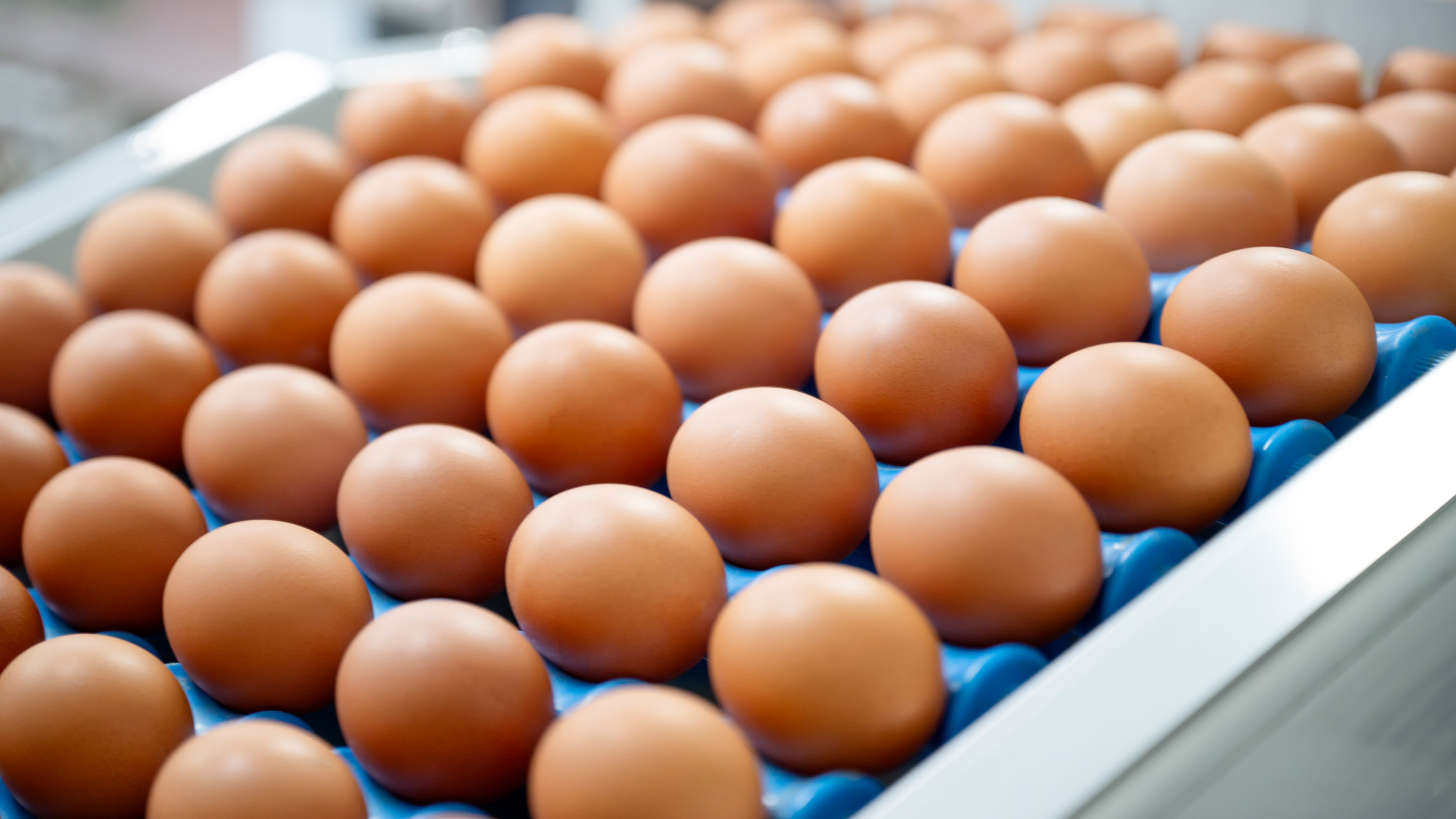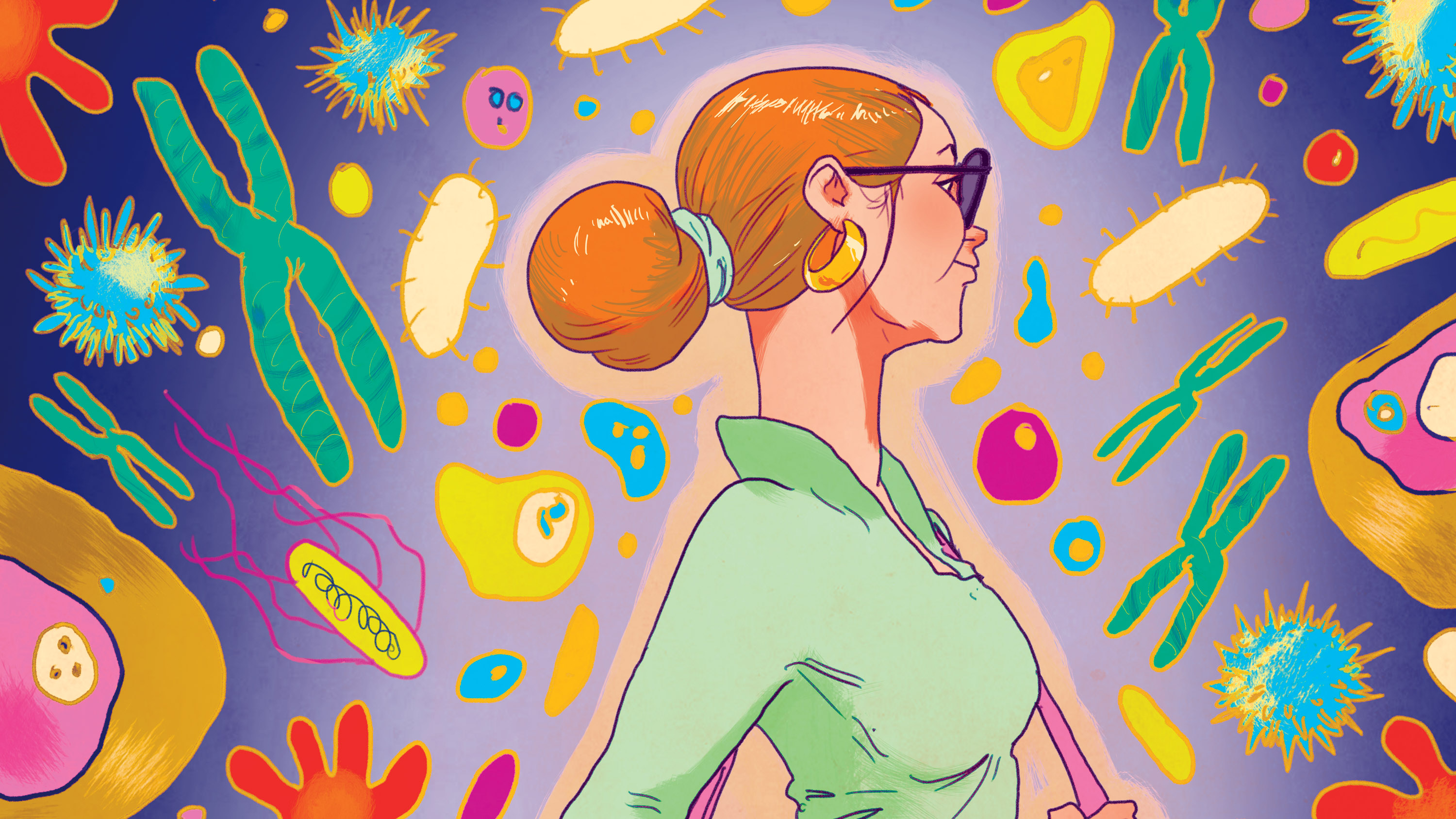What’s next for bird flu vaccines
If we want our vaccine production process to be more robust and faster, we’ll have to stop relying on chicken eggs.

This article first appeared in The Checkup, MIT Technology Review’s weekly biotech newsletter. To receive it in your inbox every Thursday, and read articles like this first, sign up here.
Here in the US, bird flu has now infected cows in nine states, millions of chickens, and—as of last week—a second dairy worker. There’s no indication that the virus has acquired the mutations it would need to jump between humans, but the possibility of another pandemic has health officials on high alert. Last week, they said they are working to get 4.8 million doses of H5N1 bird flu vaccine packaged into vials as a precautionary measure.
The good news is that we’re far more prepared for a bird flu outbreak than we were for covid. We know so much more about influenza than we did about coronaviruses. And we already have hundreds of thousands of doses of a bird flu vaccine sitting in the nation’s stockpile.
The bad news is we would need more than 600 million doses to cover everyone in the US, at two shots per person. And the process we typically use to produce flu vaccines takes months and relies on massive quantities of chicken eggs. Yes, chickens. One of the birds that’s susceptible to avian flu. (Talk about putting all our eggs in one basket. #sorrynotsorry)
This week in The Checkup, let’s look at why we still use a cumbersome, 80-year-old vaccine production process to make flu vaccines—and how we can speed it up.
The idea to grow flu virus in fertilized chicken eggs originated with Frank Macfarlane Burnet, an Australian virologist. In 1936, he discovered that if he bored a tiny hole in the shell of a chicken egg and injected flu virus between the shell and the inner membrane, he could get the virus to replicate.
Even now, we still grow flu virus in much the same way. “I think a lot of it has to do with the infrastructure that’s already there,” says Scott Hensley, an immunologist at the University of Pennsylvania’s Perelman School of Medicine. It’s difficult for companies to pivot.
The process works like this: Health officials provide vaccine manufacturers with a candidate vaccine virus that matches circulating flu strains. That virus is injected into fertilized chicken eggs, where it replicates for several days. The virus is then harvested, killed (for most use cases), purified, and packaged.
Making flu vaccine in eggs has a couple of major drawbacks. For a start, the virus doesn’t always grow well in eggs. So the first step in vaccine development is creating a virus that does. That happens through an adaptation process that can take weeks or even months. This process is particularly tricky for bird flu: Viruses like H5N1 are deadly to birds, so the virus might end up killing the embryo before the egg can produce much virus. To avoid this, scientists have to develop a weakened version of the virus by combining genes from the bird flu virus with genes typically used to produce seasonal flu virus vaccines.
And then there’s the problem of securing enough chickens and eggs. Right now, many egg-based production lines are focused on producing vaccines for seasonal flu. They could switch over to bird flu, but “we don’t have the capacity to do both,” Amesh Adalja, an infectious disease specialist at Johns Hopkins University, told KFF Health News. The US government is so worried about its egg supply that it keeps secret, heavily guarded flocks of chickens peppered throughout the country.
Most of the flu virus used in vaccines is grown in eggs, but there are alternatives. The seasonal flu vaccine Flucelvax, produced by CSL Seqirus, is grown in a cell line derived in the 1950s from the kidney of a cocker spaniel. The virus used in the seasonal flu vaccine FluBlok, made by Protein Sciences, isn’t grown; it’s synthesized. Scientists engineer an insect virus to carry the gene for hemagglutinin, a key component of the flu virus that triggers the human immune system to create antibodies against it. That engineered virus turns insect cells into tiny hemagglutinin production plants.
And then we have mRNA vaccines, which wouldn’t require vaccine manufacturers to grow any virus at all. There aren’t yet any approved mRNA vaccines for influenza, but many companies are fervently working on them, including Pfizer, Moderna, Sanofi, and GSK. “With the covid vaccines and the infrastructure that’s been built for covid, we now have the capacity to ramp up production of mRNA vaccines very quickly,” says Hensley. This week, the Financial Times reported that the US government will soon close a deal with Moderna to provide tens of millions of dollars to fund a large clinical trial of a bird flu vaccine the company is developing.
There are hints that egg-free vaccines might work better than egg-based vaccines. A CDC study published in January showed that people who received Flucelvax or FluBlok had more robust antibody responses than those who received egg-based flu vaccines. That may be because viruses grown in eggs sometimes acquire mutations that help them grow better in eggs. Those mutations can change the virus so much that the immune response generated by the vaccine doesn’t work as well against the actual flu virus that’s circulating in the population.
Hensley and his colleagues are developing an mRNA vaccine against bird flu. So far they’ve only tested it in animals, but the shot performed well, he claims. “All of our preclinical studies in animals show that these vaccines elicit a much stronger antibody response compared with conventional flu vaccines.”
No one can predict when we might need a pandemic flu vaccine. But just because bird flu hasn’t made the jump to a pandemic doesn’t mean it won’t. “The cattle situation makes me worried,” Hensley says. Humans are in constant contact with cows, he explains. While there have only been a couple of human cases so far, “the fear is that some of those exposures will spark a fire.” Let’s make sure we can extinguish it quickly.
Now read the rest of The Checkup
Read more from MIT Technology Review’s archive
In a previous issue of The Checkup, Jessica Hamzelou explained what it would take for bird flu to jump to humans. And last month, after bird flu began circulating in cows, I posted an update that looked at strategies to protect people and animals.
I don’t have to tell you that mRNA vaccines are a big deal. In 2021, MIT Technology Review highlighted them as one of the year’s 10 breakthrough technologies. Antonio Regalado explored their massive potential to transform medicine. Jessica Hamzelou wrote about the other diseases researchers are hoping to tackle. I followed up with a story after two mRNA researchers won a Nobel Prize. And earlier this year I wrote about a new kind of mRNA vaccine that’s self-amplifying, meaning it not only works at lower doses, but also sticks around for longer in the body.
From around the web
Researchers installed a literal window into the brain, allowing for ultrasound imaging that they hope will be a step toward less invasive brain-computer interfaces. (Stat)
People who carry antibodies against the common viruses used to deliver gene therapies can mount a dangerous immune response if they’re re-exposed. That means many people are ineligible for these therapies and others can’t get a second dose. Now researchers are hunting for a solution. (Nature)
More good news about Ozempic. A new study shows that the drug can cut the risk of kidney complications, including death in people with diabetes and chronic kidney disease. (NYT)
Microplastics are everywhere. Including testicles. (Scientific American)
Must read: This story, the second in series on the denial of reproductive autonomy for people with sickle-cell disease, examines how the US medical system undermines a woman’s right to choose. (Stat)
Deep Dive
Biotechnology and health

This researcher wants to replace your brain, little by little
The US government just hired a researcher who thinks we can beat aging with fresh cloned bodies and brain updates.

Aging hits us in our 40s and 60s. But well-being doesn’t have to fall off a cliff.
Lifestyle changes could counter some of the deterioration.

Beyond gene-edited babies: the possible paths for tinkering with human evolution
CRISPR will get easier and easier to administer. What does that mean for the future of our species?

A new law in California protects consumers’ brain data. Some think it doesn’t go far enough.
Tech companies collect brain data that could be used to infer our thoughts—so it’s vital we get legal protections right.
Stay connected
Get the latest updates from
MIT Technology Review
Discover special offers, top stories, upcoming events, and more.